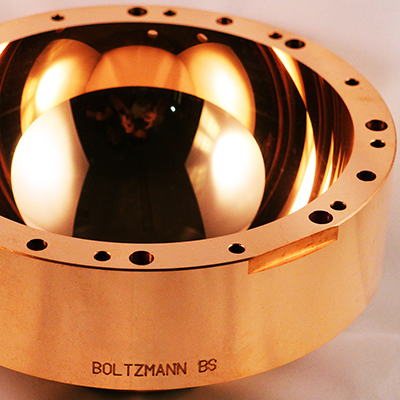Meet Dr Peter Thompson FREng (PhD in the School of Industrial and Manufacturing Science 1992) CEO, National Physical Laboratory and 2022 Distinguished Manufacturing and Materials Alumni Award winner.
Dr Peter Thompson FREng FInstP FRSC is CEO of the National Physical Laboratory (NPL). The NPL is the UK’s National Metrology Institute (NMI) which is widely regarded as one of the leading NMIs in the world. Peter joined NPL as CEO in 2015 and has overseen the laboratory’s development and growth in recent years aligned to the UK’s National Challenges. This has included providing strategic leadership and oversight of NPL-led programmes including the Cancer Research UK Rosetta Cancer Grand Challenge, National Timing Centre programme, Quantum programme, Measurement for a Recovery programme and the Advanced Machinery and Productivity initiative.
In this interview, Peter shares his view on the future of the manufacturing industry and how his time at Cranfield has had a positive lasting impact throughout his career.
What advice would you give to a student starting their Cranfield course looking to go into the manufacturing industry?
My advice to students would be to take every opportunity to build a network of contacts in your field. When you make a good contact, be sure to ask them who else they think you should be connecting with to help your professional development.
Cranfield courses provide you with building blocks in knowledge and skills to tackle the biggest national and international challenges of our age. When you start your career journey after Cranfield, or if you are looking for ways to progress and make a difference in the industry, you should think about what the future of the manufacturing sector looks like;
- What will need to be made and for who?
- What do people need?
- What does the planet need?
- What will keep us secure?
I believe new ways of manufacturing will be needed for MedTech, digital healthcare, healthier and longer independent living; and new and renewable sources of energy will be required from generation to consumption, but it raises the following questions to consider:
- Can hydrogen be delivered on the existing infrastructure for fossil fuels?
- What materials are required for sustainable off and onshore energy production and dissemination?
- How will we transit safely and securely?
- How will smart cities work effectively?
Anyone involved in manufacturing or wanting to get into manufacturing needs to think about how we can answer these questions and solve the challenges ahead.
How has Cranfield helped your career?
The sheer breadth of my PhD – materials science, non-linear optics, laser physics, and organic chemistry synthesis gave me a narrative with which to discuss S&T with colleagues, partners and customers for the early years of my career. The focus on application, and impact in the real world, has stayed with me throughout my career, and all the extracurricular activities gave me a lot of opportunities to practice public speaking and explore leadership roles.
What is your favourite memory of Cranfield?
I have a few distinctive memories of my time at Cranfield, in addition to making lifelong friends, I got involved in political issues to make a difference. I remember writing to MrsThatcher to ask her to resign (she did) and separately to ask for Nelson Mandela to be released from prison (he was).
I also stopped eating KitKat’s in protest at Nestle for their actions on baby milk distribution in developing economies and joined the Baby Milk Action Coalition (BMAC). Although I have returned to eating KitKats, two out of three isn’t bad.
However, my favourite memory would have to be the period of time that I, along with my friend Sandy, became DJs for the Cranfield Students’ Association. We had many entertaining evenings and my love for playing music has not faded - I received a DJ mixer for my birthday this year.
What is the most memorable part of your course when you were studying?
The most memorable part of my course was spending days on end in a full-body suit, inside a clean lab, developing layer upon layer of Langmuir Blodgett films. We had no mobile phones in the 90s to keep us entertained, however, there was always plenty to do in the football or cricket team to keep me busy - as well as, planning the laser physics to assess the secondary harmonic generation of the tetra-cyano-nitroquinoline multi-layer of course.
What does it mean to be a part of the alumni community?
I have maintained a connection with Cranfield in the second half of my career through Shrivenham when I was in the Military of Defence and in a range of technology areas since joining NPL. Most recently I visited Cranfield campus with a colleague and met with Professor Iain Gray to implement a precise timing signal for transport technology.
How does it feel to win the 2022 Distinguished Manufacturing and Materials Alumni Award?
I am delighted and honoured to be awarded the Distinguished Manufacturing and Materials Alumni Award. I have fond memories of my time at Cranfield University having studied at the School of Industrial and Manufacturing Science. What I learnt during those years has stayed with me throughout my career and I am grateful to the university for recognising my subsequent work.


